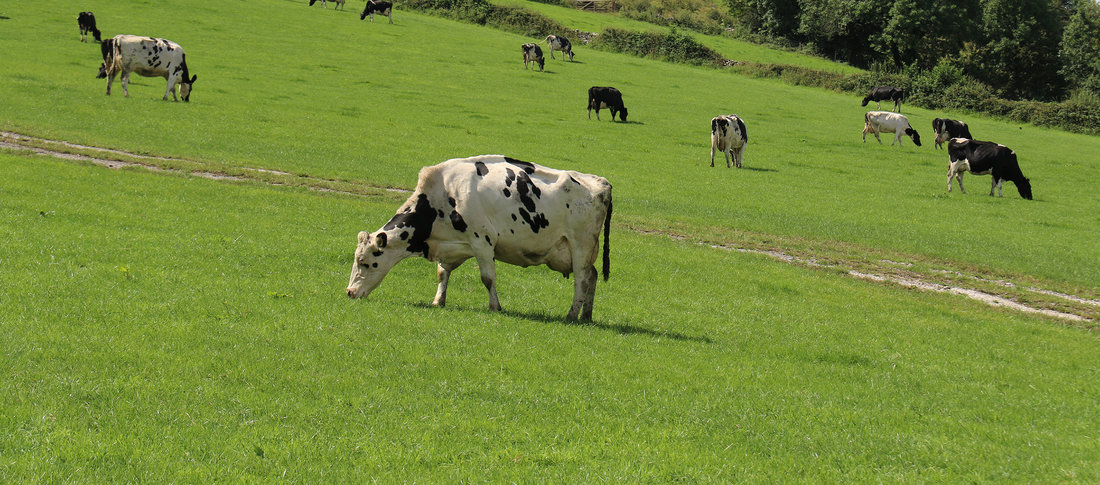Rumen function is paramount to protecting butterfats during spring grazing.
As dairy producers begin to turn out herds for spring grazing, optimising rumen function is essential to mitigate butterfat depression. According to Dr Richard Kirkland, Global Technical Manager for Volac Wilmar Feed Ingredients, there are two key factors that contribute to the dip in butterfat production that is so common at turnout.
“First off, cows go from having a controlled ration that has been balanced for nutrients such as fibre and starch, to having a sudden change in diet nutrient composition. This alone will give the rumen a shock, which goes on to impact cow performance,” says Dr Kirkland. “At the same time, the new growth of grass they will be grazing in early spring, is also high in sugar and oil but low in fibre.”
Low fibre / high sugar grass is more rapidly fermentable, compromising rumen pH and passing through the digestive tract more quickly. This combined with the high oil levels can lead to an increased risk of acidosis and significant milk fat depression.
“A great way to counteract this reaction is to buffer feed with a high fibre feed source in conjunction with an appropriate rumen-protected fat supplement. This is going to slow down digestive flow and help optimise rumen conditions,” says Dr Kirkland.
While high fibre ingredients such as straw can help slow down the flow of feed through the digestive system and raise the rumen pH, they also fill the rumen with low feed quality bulk that will reduce energy intake and milk protein. Digestible fibre sources such as sugar beet pulp, citrus pulp and soya bean hulls are excellent feed sources to include in the concentrate to create a better balance in the rumen.
“Rumen-protected fat supplements provide a dense energy source while also supporting rumen function,” explains Dr Kirkland. “If energy requirements are instead met through rapidly fermentable carbohydrates such as wheat in the form of concentrate, the risk of acidosis will be further increased in grazing cows.”
Fat is more than a dense energy source
According to Dr Kirkland, individual fatty acids impact cow performance by partitioning nutrients to different areas of performance. Therefore, fatty acids should be selected depending on the stage of lactation, individual farm challenges and requirements to maximise returns from specific milk contracts.
For spring calving cows in early lactation, the challenge is to manage body condition score to aid in the effort to get the cow back in calf. As a general rule, each one-unit loss in condition will reduce conception rates by 10%. During this early lactation period, C18:1 (oleic acid) is the key fatty acid to deliver to the small intestine for absorption as the latest research demonstrates its effect on insulin status, increasing partitioning of energy and nutrients to improve body condition and to improve development of eggs.
For cows in the post-peak period of lactation, supplementing with products containing high levels of C16:0 (palmitic acid) will increase partitioning of nutrients to milk, which in turn will improve milk fat production.
While targeting these specific fatty acid requirements is not feasible in a year-round calving system, a multi-purpose fat supplement like Mega-Max with a research-proven ratio of C16:0 and C18:1 is an effective way to meet the nutritional needs of the entire herd at all stages of lactation.
“By understanding the impact of specific fatty acids at different stages of lactation, fat supplementation can be used to optimise herd performance while also serving as an essential, dense energy source,” concludes Dr Kirkland.
Date: April 17, 2020
Further information from:
Laura Steeden
Volac Wilmar Feed Ingredients
Feed Fats Product Manager
Tel: +44 1223 206226
Email: laura.steeden@volac.com
